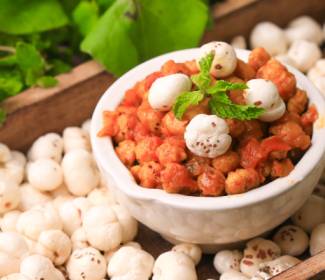
Mexico was the first country in Latin America to establish diplomatic relations with India in 1950. Despite the vast geographical distance that separates them, the two countries share certain commonalities. Both are democracies, diverse societies and share similar development priorities. This view is echoed by Octavio Paz, Nobel Laureate and former Mexican Ambassador to India, “From the beginning, everything that I saw inadvertently evoked forgotten images of Mexico. The strangeness of India brought to mind that other strangeness: my own country”.
Mexico is currently India’s largest trading partner in Latin America. India is currently Mexico’s ninth-most important global trading partner. The last decade has seen a spurt in trade between the two countries, which has grown from around $5 bn in 2015-16 to $8 bn in 2019-20. The two countries have a thriving business relationship in several key sectors. Crude oil dominates India’s imports from Mexico in addition to import of electrical goods, machinery, electronic equipment and auto parts. India’s exports to Mexico comprise mainly of vehicles, organic chemicals, aluminium products, iron and steel, and ceramic products. Further, Indian companies have so far invested around $3 bn in Mexico.
Mexican companies find it lucrative to invest in the Food Processing market in India, which is mainly due to reasons such as rising disposable income of the Indian population, young workforce, and urbanisation. In addition to that, health consciousness, the need for convenience, and improving lifestyles are expected to lead to a substantial rise in food demand over the next seven to ten years.
India: The Leading Global Food Supplier
The Indian food processing sector is one of the leading contributors in the growth of the Indian economy. It creates a direct linkage between the rural economy and the industry and has emerged as a champion sector making it one of the largest industries in India. 70% of India’s rural populace is still dependent on agriculture for their daily livelihood but currently India processes less than 10% of its agricultural output, thus, presenting immense opportunities for increasing these processing levels and investments in this sector. Fiscal reliefs and incentives for agriculture and its allied sectors present myriad opportunities which will further lead to employment generation, promotion of crop diversity, increment of farm gate prices (sale of farm produce directly from the producer).
With the government’s support and a favourable policy ecosystem, the food processing sector has been growing at an Average Annual Growth Rate (AAGR) of around 10% between 2015-19. The Indian food industry’s output is expected to reach $535 bn by 2025-26. Rising household incomes, urbanization, and the growth of organized retail are currently some of the major drivers of this market.
Demand Drivers
Several factors play a role in the growth of the sector, the chief being changing lifestyle and food habits due to increased disposable income. Secondly, the high level of agricultural production - large livestock base, a wide variety of crops, inland water bodies, and a long coastline, helps increase marine production.
Additionally, proximity to key export destination, aids in integration with the global economy, and proactive government policy and support have led to a significant growth in the sector, however, there are many untapped areas in the food processing sector that call for greater collaboration between India and Mexico which will result in higher trade and economic prosperity.
Collaborative Opportunities for India and Mexico
- Spices: India is the largest exporter of spices to Mexico, accounting for more than 30% of all the spices imported into Mexico. Hence, Mexican companies can utilise this opportunity by setting up processing facilities in various states especially Andhra Pradesh which is the largest spice-producing state in India. Mexican investors can take advantage of Chilli, which is the major spice occupying 34% of the total spices production in the country.
- Processing Opportunities: The pandemic has seen a rise in the global consumption of RTE (ready-to-eat)/RTC (release to customer) products. We know that the Indian ready-to-eat food market stood at $261 mn in 2017 and is projected to grow at a CAGR of over 16% during 2018-2023 to reach $647 mn by 2023. Immense opportunities lie in the processing of agricultural products to high-value products like snacks, ready-to-cook/ready-to-eat products, health drinks, bakery products, frozen/packaged food, etc. There are also opportunities for new blends and mixtures of spices for niche food items.
- Poultry: India has a huge livestock base and is the 2nd poultry market in the world and is the largest producer of buffalo meat in the world and the 2nd producer of goat meat. In 2019-20, India produced 114.38 billion eggs and thus, this sector has a huge potential to be organized into a high revenue-generating industry with various technological developments in terms of hygiene, safety standards, modernized abattoirs, meat traceability, and further processing for packaged products. The top states for egg production are Andhra Pradesh, Tamil Nadu, and Telangana and thus the Mexican investors can look into the import of poultry products and can set up facilities in India and also benefit from the trade of these products.
- Edible Oil: The edible oil segment in India has a huge untapped potential and has registered a compounded annual growth rate of ~17% from 2014-2019. The market is expected to rise to INR 2.7 tn by 2024 and can be a great investment opportunity at the current stage. There is a great focus on the expansion of the area under oilseed cultivation, with an increase from 26 million hectares in 2016 to more than 31 million hectares in 2022. Various initiatives to also increase the yield of oilseed cultivation, leading to a 180% production of oilseed at the end of the specified time, which can be put to advantage by Mexican oil-producing giants.
- Marine sector: India is the 2nd largest producer of fisheries with production at 13.7 mn MT in 2018-19. Marine products also are the largest exported food commodity to Mexico from India. Mexican companies could explore the potential of establishing marine processing clusters in Indian states such as Andhra Pradesh, West Bengal, Gujarat, Odisha, and Tamil Nadu with ample supply of raw material and a low-cost ecosystem.
- Product development and value-addition in Dairy: India continued to be the largest producer of milk in the world with production of 187.7 mn tonnes during 2018-19 with a target to achieve 255 MT by 2022. New product development in value-added dairy products viz. cheese, smoothies, flavoured milk, custard, yogurt, and other Indian products. This creates tremendous opportunities for Mexican companies to bring in the expertise and establish cheese and yogurt manufacturing units in major milk-producing states such as Uttar Pradesh, Rajasthan, Madhya Pradesh, Andhra Pradesh, Gujarat. The Indian cheese market is expected to reach a value of $1.71 bn by 2024, expanding at a CAGR of 26% during 2019-2024. Value-added processing has an investment return potential of 17-20%.
- Infrastructure Opportunities: There are massive capacity gaps in cold chain infrastructure in India such as 99.6% in modern packhouses, 85% in reefer transport, 91% in ripening chambers, and 10% in the cold chamber (bulk) which provides immense opportunities for the companies to bring in Mexican expertise to India.
- Research & Development: IIFPT and NIFTEM offer various academic programs in Under Graduate Degree B.Tech (Food Technology), Masters Degrees M.Tech (Food Technology) in Food Process Engineering, M.Tech (Food Technology) in Food Process Technology, M.Tech (Food Technology) in Food safety and quality assurance, Doctorate Degree in Food Process Engineering and Food Science and Technology. Joint research programs could be organized to increase cooperation in the field of agricultural research and education. Joint incubation/research centres in India to promote technological breakthroughs and innovative research in the areas of food and agriculture can also be explored. Student and faculty exchange programs between IIFPT/NIFTEM and Universities in Mexico can be explored. This will be to the benefit of students and faculty members so as to promote joint research in the two countries and learn from the best practices of each.
- Equipment and technology suppliers: In 2018-19, India imported food machinery worth $0.2 bn. Sector-wise, bakery and cereal processing is the single largest segment in terms of import of machinery. Confectionary and RTE product’s machinery projected to register the highest CAGR with 23% and 17% respectively. The dairy machinery segment is growing at a CAGR of 13%. Opportunities exist in terms of bringing in printing technology for dynamic QR codes for food traceability up until the end consumer/Smart packaging technology, Low-cost vacuum freezing/drying technology, Reverse Osmosis Polisher to promote Zero liquid discharge amongst others. Opportunities in expansion into innovative packaging solutions also exist.
There is no doubt that Mexico is fast emerging as a major and significant trade partner of India. Taking into account the fast-increasing trade between India and Mexico and considering Mexico’s growing importance to India, it has become a sine qua non that both the countries should enter into a mutually beneficial trade agreement which will result in the economic welfare for both.







